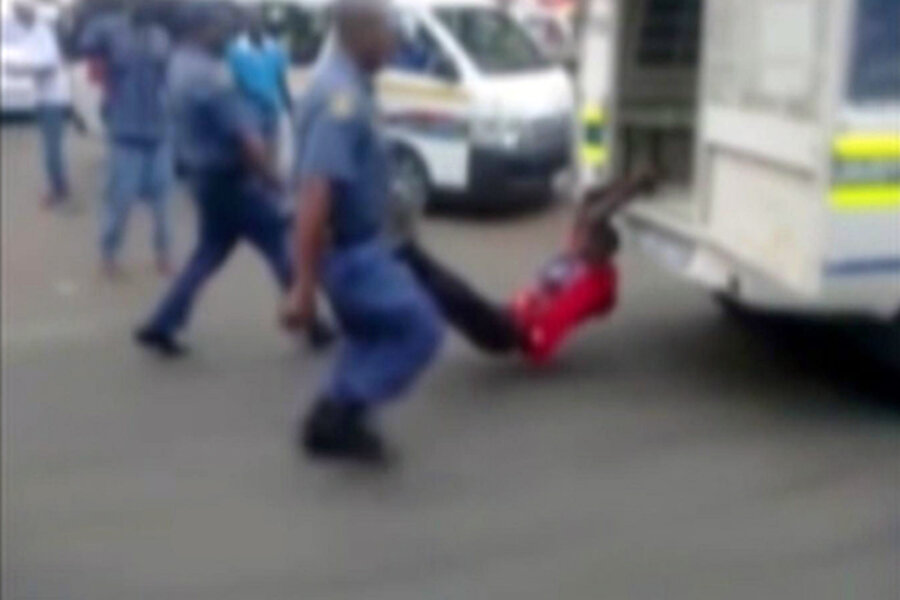South Africa police face scrutiny after video of dragging goes viral
Loading...
When a South African tabloid posted a disturbing video on its Facebook page Thursday morning, it touched off raw anger at a local police force with a long rap sheet of corruption and brutality.
Shaky cellphone camera footage shows a man in a red shirt lying immobile behind a South African police van, his arms bound to the fender. A small group of police officers cluster around him as onlookers scream out to the officers to let him go.
Then, suddenly, the van lurches forward. With a swelling crowd chasing it, the van drives off, dragging the man, kicking and writhing, along the pavement behind it. Three hours later, the man, a taxi driver from Mozambique named Mido Macia, died in a nearby police station.
Indeed, while the murder trial of Oscar Pistorius has focused renewed global attention on South Africa’s epidemic of violence, for many in the country’s poor black communities, Mr. Macia’s death highlighted a much more familiar story: a confrontation turned violent between police and a black man and the brazen attitude of police impunity that accompanied it.
“The police don’t even care that people are watching,” said Moses Dlamini of the Independent Police Investigative Directorate (IPID), a government agency that investigates crimes by the police, in a television interview.
Mr. Dlamini’s organization announced Thursday that it has officially launched an investigation into Macia’s death. In a statement, the group described the taxi driver’s severe head and abdomen injuries.
"Members of the South African police service are required to operate within the confines of the law in executing their duties,” said South African president Jacob Zuma in a statement Thursday. “The visuals of the incident are horrific, disturbing, and unacceptable. No human being should be treated in that manner.”
As many analysts have noted, South Africa faces an almost unparalleled policing challenge. Its officers must keep the peace in a country with one of the highest rates of murder, rape, and robbery in the world. At the same time, South Africans have a deep mistrust of the force, which has done little to shake its violent reputation in the two decades since it was used as the muscle of white minority rule.
Between April 2011 and March 2012, the IPID recorded 720 cases of suspicious deaths at the hands of police officers. And the number of people killed by police in South Africa doubled between 2006 and 2010, according to the Guardian.
"You must kill the bastards if they threaten you or the community," then-deputy security minister Susan Shabangu said in a widely-circulated 2008 speech to police. "I want to assure the police station commissioners and policemen and women that they have permission to kill these criminals. You must not worry about the regulations.”
For South Africans, police violence has become a wearily familiar news story. In August 2012, news footage caught officers spraying bullets into a crowd of striking platinum miners in the town of Marikana, an incident that killed 34 people and injuring 78. And as the Pistorius case unfolded last week, one of the most dramatic revelations came when it was revealed that Hilton Botha, the lead detective handling the case, was himself on trial for seven counts of alleged murder on the job.
As news of Macia’s death circulated in newspapers and social media Thursday morning, many drew parallels to the apartheid era, when deaths of activists and others in police custody were routine.
“If this was apartheid police we'd riot,” wrote prominent social activist Zackie Achmat in a tweet.







